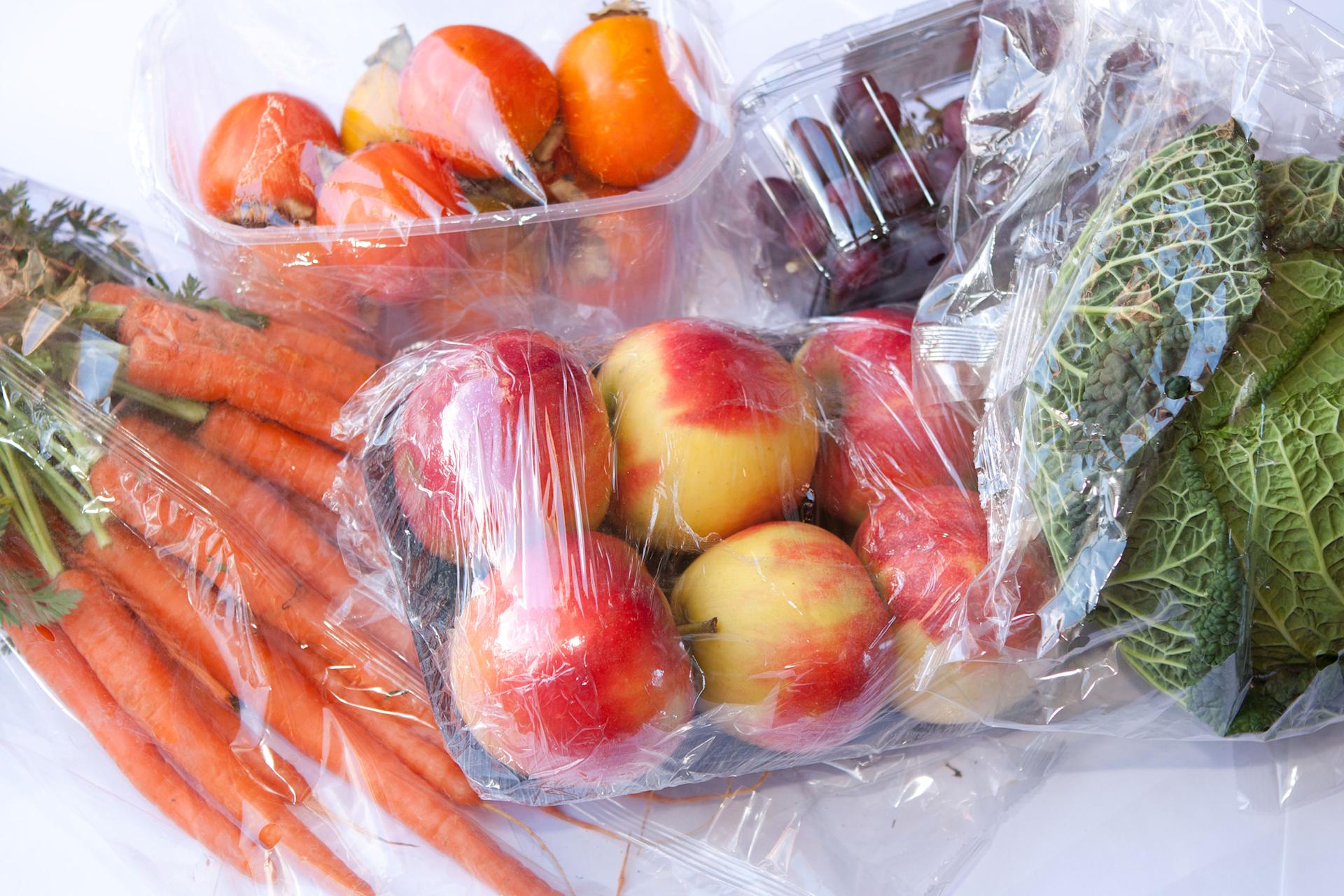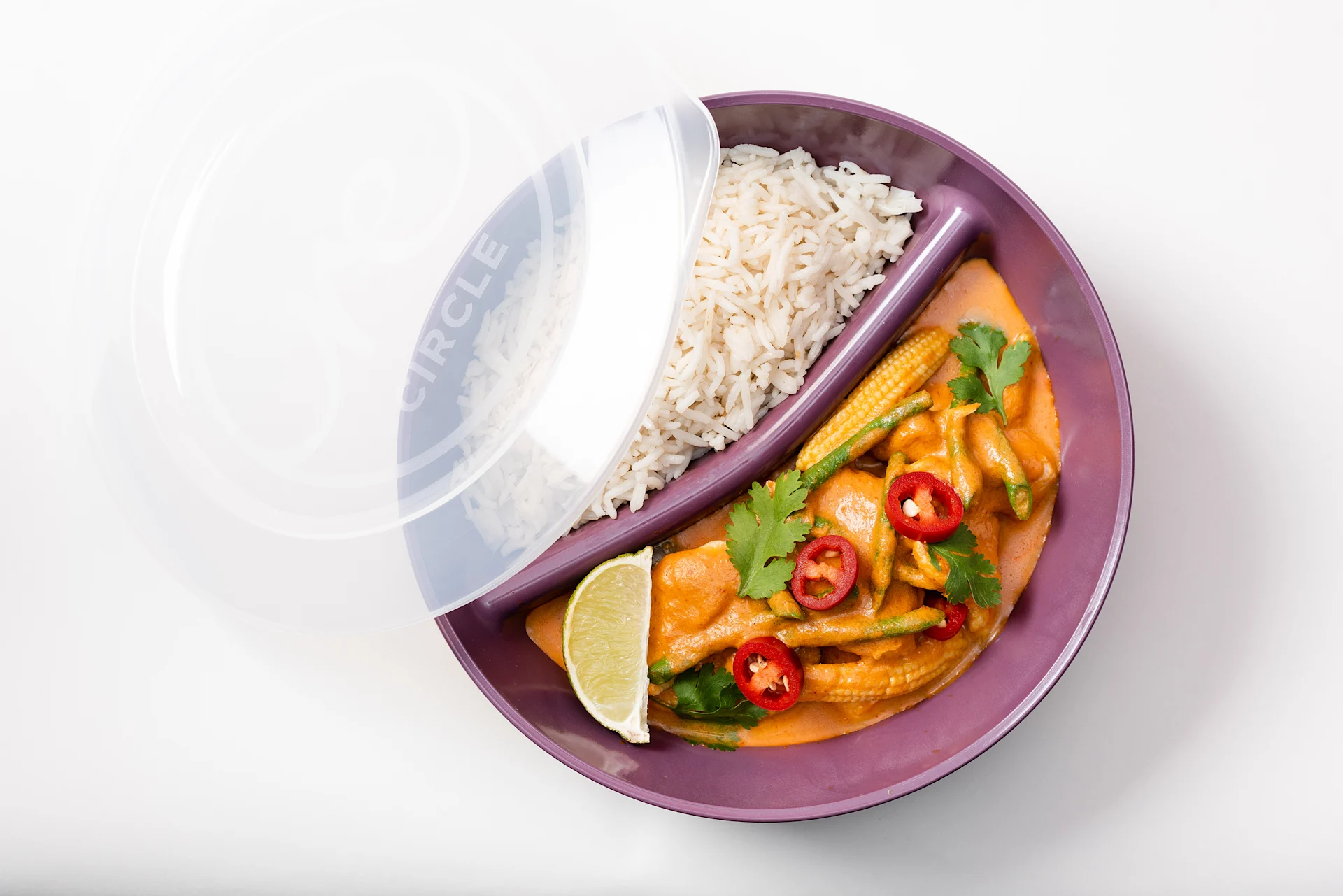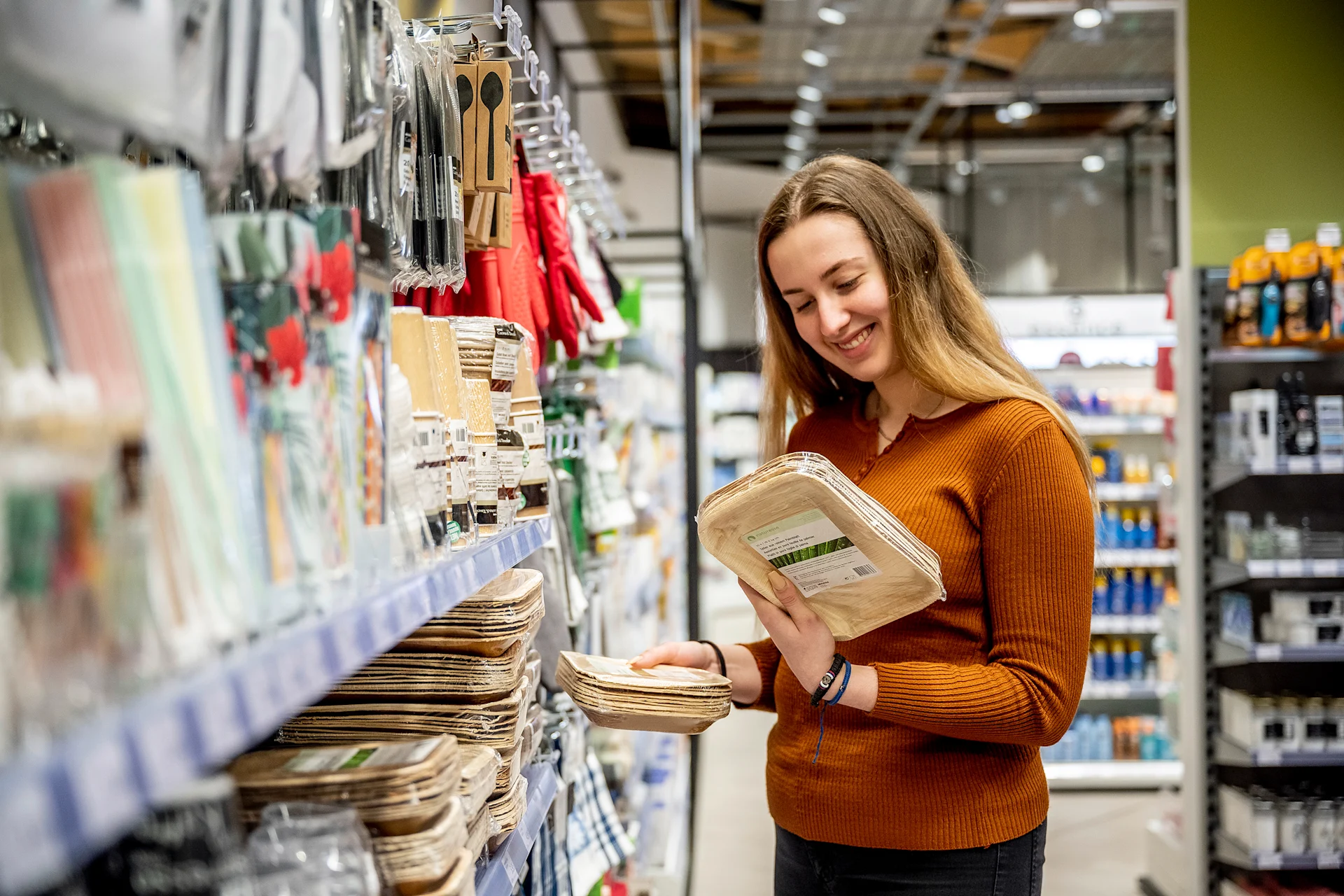
Food waste
Saving food and helping people
A visit to "Tischlein deck dich": members of the FMC Executive Board support the team on site.
navigation

Packaging
The world has a problem with plastic. And Switzerland is making a major contribution to it. So why are cucumbers – and lots of other products – still being sold in plastic? We asked 11 direct questions Hanna Krayer, the plastics expert at Migros.
We asked 11 direct questions to Hanna Krayer, Senior Sustainability Project Leader and plastics expert at Migros.
Plastic has its benefits, also for the environment. For example, if you package a kilogramme of rice in thin film packaging, it weighs around six to seven times less than a cardboard carton would. This has an effect on transportation and emissions, and thus on the CO2 footprint..
(laughs) I get asked this question a lot. Cucumbers are made up of around 95 per cent water. The more time a cucumber spends on the road, the more of it gets lost. Its shelf life can be made around five times longer by using plastic film. As a rule of thumb, this means a shelf life of three days without plastic film, as against 15 days with a plastic film..
We try to sell products loose as much as possible. But we’ve noticed that food waste increases for some types of fruit and vegetables if we try and sell them without packaging. That occurs for broccoli and salad as well as cucumbers. Plastic provides valuable protection for anything with a high water content that needs to be crisp. Sometimes what feels sustainable and what actually is sustainable are two different things.
We can use plastic, for example, to make wafer-thin sheets weighting less than 10 grammes, which can protect a 1-kilogramme product. The material is extremely efficient and also offers high product protection. That’s the main purpose of packaging. The key thing is that we recycle plastic, even though it’s not easy. For example, a PET bottle has to be recycled differently from a PE milk bottle or a polystyrene yoghurt pot.
Our Recycling Guide shows you how to separate waste correctly!
This figure relates to plastic in general, and not only packaging. It includes a whole range of things that we don’t keep in our range. We have relatively high recycling rates in the packaging sector. The proportion of PET drinks bottles that are recycled is higher than 80 per cent. The figure for PE bottles is around 50 per cent. These are good figures.
It’s easy to ask questions like that in retrospect. The fact is that Migros was the first company in Switzerland to launch a project of this type. Making the bags available in shops and setting up return points there is the easy part. The biggest problem is honouring our promise of recycling 70 per cent of the plastic collected. In order for this to happen, the existing recycling infrastructure in Switzerland would, for example, have to be expanded. It’s a challenge, but we’re moving forward as fast as we can.
Migros is investing a lot in this new recycling system. However, our aim is not to earn a profit but rather to close the plastic cycle and run a collection operation that covers its own costs. As a result, we also regularly check the costs of Migros plastic collection bags. At the moment, in most Swiss municipalities this is cheaper than a chargeable rubbish bag. However, recycling only works if we collect high-quality items. This means that our plastic collection bags should only contain plastic packaging, and not, for example, plastic toys or clothes made from synthetic materials.
If one compares their respective life cycle assessments, PET bottles come out much better than glass bottles. This is especially the case if they are produced 100 per cent from R-PET, such as our Aproz bottles. Glass is heavy. The further it has to be transported, the more of a problem it is . The same also applies for returnable glass, if transported over long distances. Thanks to the M-Check, we can see how environmentally friendly packaging is.

Products have different protection requirements. This means that there’s no single packaging that works for everything. Our Easter bunny packaging is highly innovative, but would be unsuitable for lots of other products. However, we are looking at where else it can be used. We have also developed similar packaging for CoffeeB. The protective wrappers used for individual balls can be used as garden compost. The packaging in which balls are sold can be disposed of along with waste cardboard..
The grab-and-go culture is a fact of life, and a major customer demand. Also, Migros isn’t solely responsible for this. I see lots of potential in reusable bowls. For example, we have established a partnership with reCIRCLE. Whenever Migros sells bowl food, it provides it in these reusable bowls. They can be returned at lots of locations, even others than Migros. You can also bring along your own mug to fill up with coffee at Migros takeaways.
The ideal scenario as far as I’m concerned would be one where, sometime in the future, we buy things mainly in returnable packaging. And I mean absolutely everything, wherever feasible. But we all need to do our bit for this to happen. Retailers can’t do this on their own, as customers actually need to return the returnable packaging. We have also expanded our unpackaged food points for organic foods – and will expand them even further in future. What we have to do now is to use them more..

When planning a garden party or a summer party it feels like the natural choice to provide single-use tableware. Since the end of 2020, these products have no longer been plastic at Migros, but are rather made from cardboard, wood, palm leaves or bioplastic. This means we can avoid 577 tonnes of plastic waste every year.
Find out more about plastic-free single-use tableware and cutlery
Discover exciting stories about all aspects of Migros, our commitment and the people behind it. We also provide practical advice for everyday life.